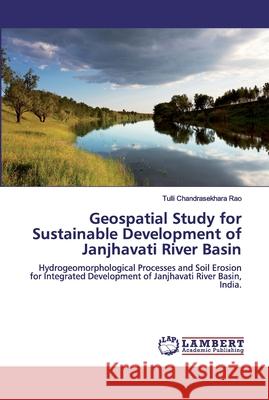Geospatial Study for Sustainable Development of Janjhavati River Basin » książka
Geospatial Study for Sustainable Development of Janjhavati River Basin
ISBN-13: 9786200470102 / Angielski / Miękka / 2020 / 272 str.
Janjhavati river is a tributary of the Nagavali river having a catchment area of 813.91 sq km and is an interstate river, taking its origin from the hilly regions of the Narayanpatna block of Odisha, and enters in Andhra Pradesh near Banjakuppa of Komarada Mandal. The study has been taken up as an attempt to utilize a multi-disciplinary approach in its evaluation. RUSLE model is used for the prediction of soil erosion due to runoff, thus helps prioritize the areas for further planning and taking necessary measures for soil conservation. The Analytic Hierarchy Process (AHP), is an effective tool for dealing with complex decision making and may aid the decision-maker to set priorities and make the best decision. The Weighted overlay tool was used for site suitability modeling. The RULSE model for calculating soil erosion, the soil loss values of the basin as categorized into five categories of Very high, high, moderate, low, very low are found to most suited with GIS weighted overlay site suitability. Basing on the analysis the conservation structures like check dams, contour bunds, and contour trenches are suggested for storage and stop soil loss of the Janjhavati river basin.











